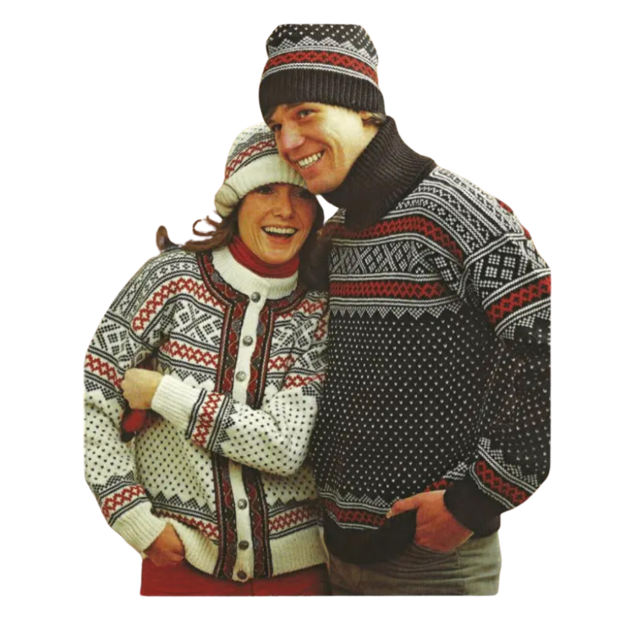The Traditional SETESDAL Jacket/Cardigan
WE ARE HAPPY AND PROUD TO INVITE YOU TO THIS EXTENSIVE ONLINE KNITTING COURSE!
The lusekofte ("lice jacket") , also called the Setesdal sweater is a traditional Norwegian Sweater dating from the 19th century.
The original sweater features a black and white design, the name referring to the isolated black stitches. In recent times additional color is sometimes given to this black and white sweater, for instance by woven ribbons or bands of black woolen fabric embroidered in the type of colorful designs also found in the Norwegian "bunads" and in rose painting around the neck and along the front opening. These front opening are usually closed by a row of pewter or silver clasps.
In this course, we will be KNITTING the front/neck bands, so you will not need to purchase any ribbons.
The different Setesdal patterns have a lot of small variations - and you may of course choose your own color combination. The most traditional ones are in black and white only - but we will be knitting the version in the photo below - with a touch of red added.
SIZES: from Small to 5XL!
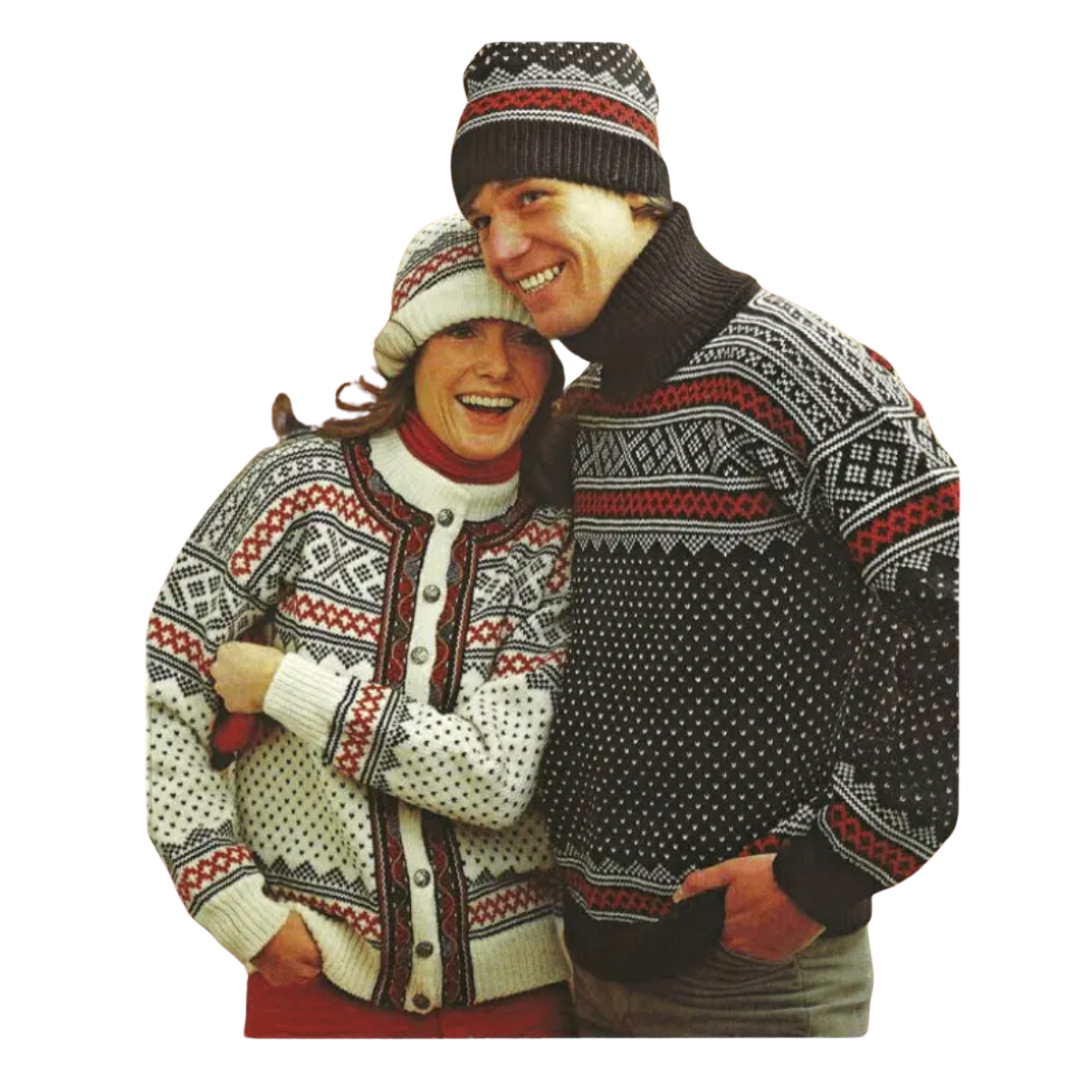
THE TRADITIONS OF THE SETESDAL CARDIGAN:
The story begins with small “lice” that have left deep traces behind. The louse is the smallest pattern element in knitting techniques. It was first used in an undershirt in Setesdal, sometime around the mid-1800s, and multiplied in such a way that it has more “descendants” than anything else in knitting history.
Here is the story of the lice sweater from Setesdal.
A few miles north of Kristiansand, a valley begins, stretching about 20 miles, following the river Otra up to Byglandsfjorden, and continuing along the river between narrow mountain gorges and steep hills. Setesdal is known for preserving old costumes and customs better than any other valley in Norway.
At the time when the first lice sweater was created, the people of Setesdal lived in dark smokehouses with an open fire in the middle of the room. There was an opening in the ceiling for smoke, and that's where daylight came from, as few houses had windows.
In the evenings, people sat around the fireplace, and tales, songs, and verses passed from mouth to mouth – and handcraft techniques from hand to hand. The girls had knitting in their hands wherever they went. These were long, bright summer evenings on the hills.
This knitting pattern is the most popular and most copied in Norway, but regardless of changes, the sweater is still highly recognizable – its uniqueness remains. The people of Setesdal embraced the louse as a decorative motif and created an immortal garment. It has survived countless fashion trends and has been a bestseller for the past 50-60 years. It has also been an economic backbone for many knitting factories; they all ensure they have a variant of the Setesdal sweater in their product range.
What is it about this lice sweater from Setesdal? Why is it still as relevant, lively, and fresh?
It is stylish, flattering for both women and men, youthful, old-fashioned, and sporty at the same time – and it is also a statement piece. It is classless and timeless. The sweater's immortality is probably also due to its becoming an essential part of the Norwegian identity.
Is it allowed to "steal" others' designs on Setesdal sweaters?
No other sweater has been copied and varied in such large numbers as Setesdal sweaters – and it is not theft to draw ideas from our knitting heritage. Patterns with national traditions are common property and cannot be protected by law. We should preserve the Setesdal sweater as a national treasure.
It is assumed that knitting has been widespread in Norway since the early 1600s, and possibly even earlier. How widespread it was is hard to say. The first written source of knitting in Norway is a court record in Bergen, where Lisbet Pedersdatter was accused of witchcraft in 1634. She had worked for Karen Eriksdatter, who was accused of theft. Both are described as wanderers, and one of Lisbet's tasks was to knit stockings for Karen, who sold the goods.
In the 1600s, knitting became part of efforts to combat poverty. Knitting was taught in workhouses and similar institutions, spreading to poor people. Some of these institutions became so-called Manufactories that produced for sale, with the military, poor relief, the navy, and slavery as important markets. The products were knitted stockings, mittens, and sweaters. Knitted goods were also sold in rural areas, but these were mostly produced as handicrafts.
In written sources from the 1700s, it is stated that women earned a living as knitters or by teaching knitting and other textile techniques. Knitting was thus established both in the finer handwork among women in the upper social classes and as an industry and sales handicraft during this period.
(Sources: Sundbø, Annemor: Lusekofta fra Setesdal and https://www.snl.no/)
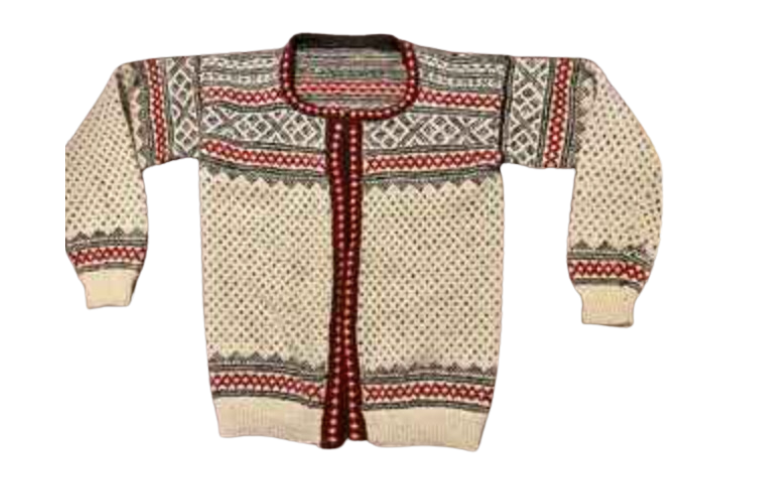
SIZES: from Small to 5XL!
Information according to sizes:
Suggested yarn:
WOOL YARN: Rauma Finull - OR Hillesvåg ASK - or any other yarn brand that knits up 24 stitches to 10 cm/4 inches.
It is also possible to use a wool blend (like Viking Sport).
Please note: 100% Acrylic yarn is NOT possible to use, as we will be steeking.
INFO/SIZE | S | M | L | XL | 2XL | 3XL | 4XL | 5XL |
Yardage Base color (in grams) | 400 | 450 | 500 | 550 | 600 | 650 | 700 | 750 |
Yardage Pattern Color 1 (in grams) | 200 | 200 | 250 | 250 | 300 | 300 | 350 | 350 |
Yardage Pattern Color 2 (red) (in grams) | 200 | 200 | 200 | 200 | 200 | 200 | 200 | 200 |
Upper width (cm) | 97 | 104 | 110 | 117 | 124 | 130 | 137 | 144 |
Upper width (inches) | 38 | 41 | 43,5 | 46 | 48,7 | 51,4 | 54 | 56,5 |
Full length (cm) | 60 | 63 | 66 | 67 | 68 | 68 | 69 | 70 |
Full length (Inches) | 23 | 24,8 | 26 | 26,3 | 26,7 | 26,7 | 27,2 | 27,6 |
Sleeve length cm | 48 | 48 | 52 | 54 | 54 | 54 | 55 | 55 |
Sleeve length (Inches) | 18,9 | 18,9 | 20,5 | 21,2 | 21,2 | 21,2 | 21,6 | 22 |
The measurements are for the knitted garment, and includes approx. 1 inch of positive ease.
Suggested needles:
Circular needles sizes
Metric: 2,5 mm, 3,0 mm/3,5 mm, length 60 cm or 80 cm (depending on the size you`re knitting)
US: 2, 3 and/or 4, length 24 or 32 inches (depending on the size you`re knitting)
Double Pointed needles for the sleeves (same sizes), OR you can use The Magic Loop Technique and continue with circular needles.
Clasps/Buttons:
The original cardigan requires clasps - HOWEVER: you may crochet “button loops” if you want to use regular buttons, and not clasps. You will learn how to do that, too.
Gauge:
24 stitches of stockinette = 10 cm/4 inches in width, and 28 rows/rounds = 10 cm/4 inches in height. Suggested needles are 3 mm or 3,5mm ( US: sizes 2, 3 or 4). Please make sure you knit a swatch (in the round) to find the correct needle size - to obtain the correct gauge!
- There will be detailed written instructions, AND tutorial videos for EVERYTHING - you`ll NEVER get stuck!
You`ll NEVER regret joining this course - see what other knitters say:
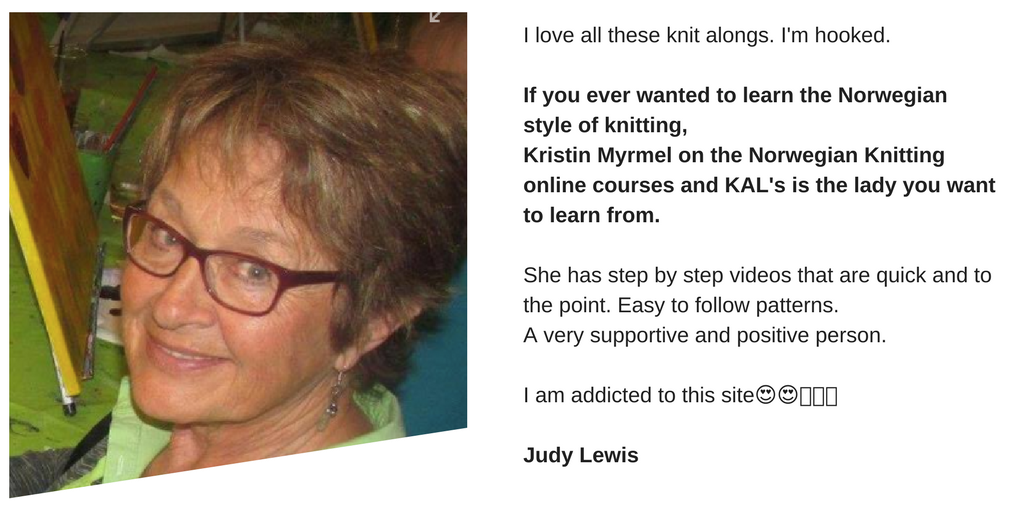
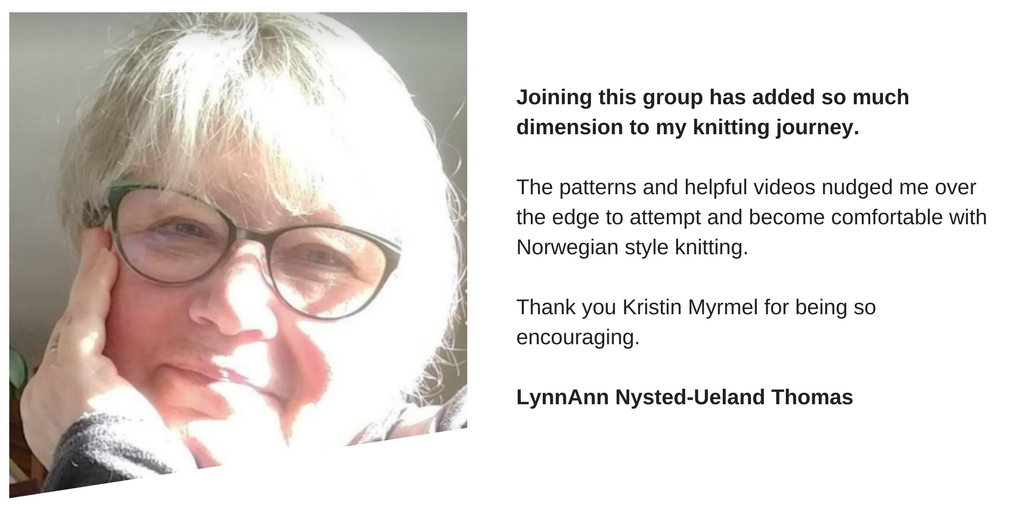

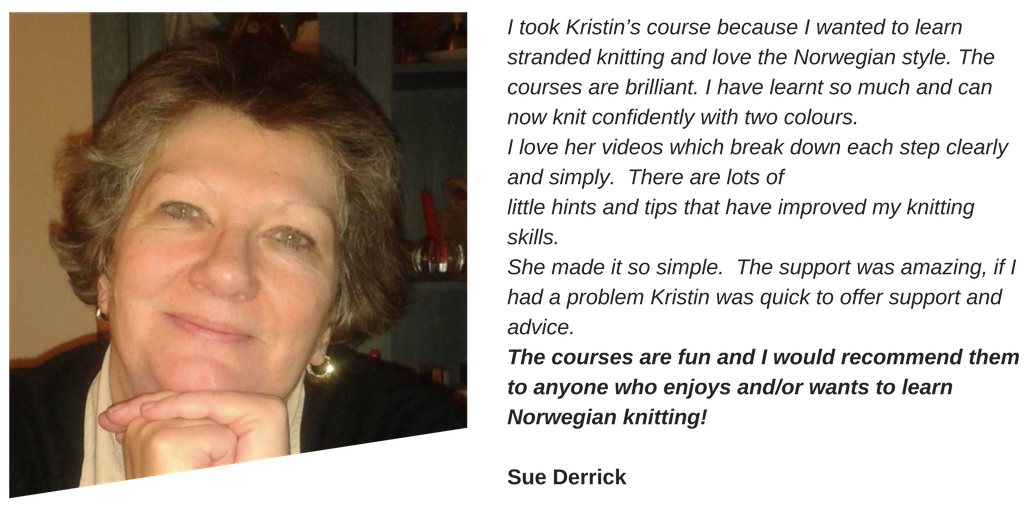
YES - I WANT TO JOIN THIS COURSE AND KAL!
YES - I will help you all the way to the completed SETESDAL cardigan/sweater!
Come join us, this will be SO much FUN!

Kristin Myrmel
Norwegian Knitting
kristin@norwegianknitting.no
